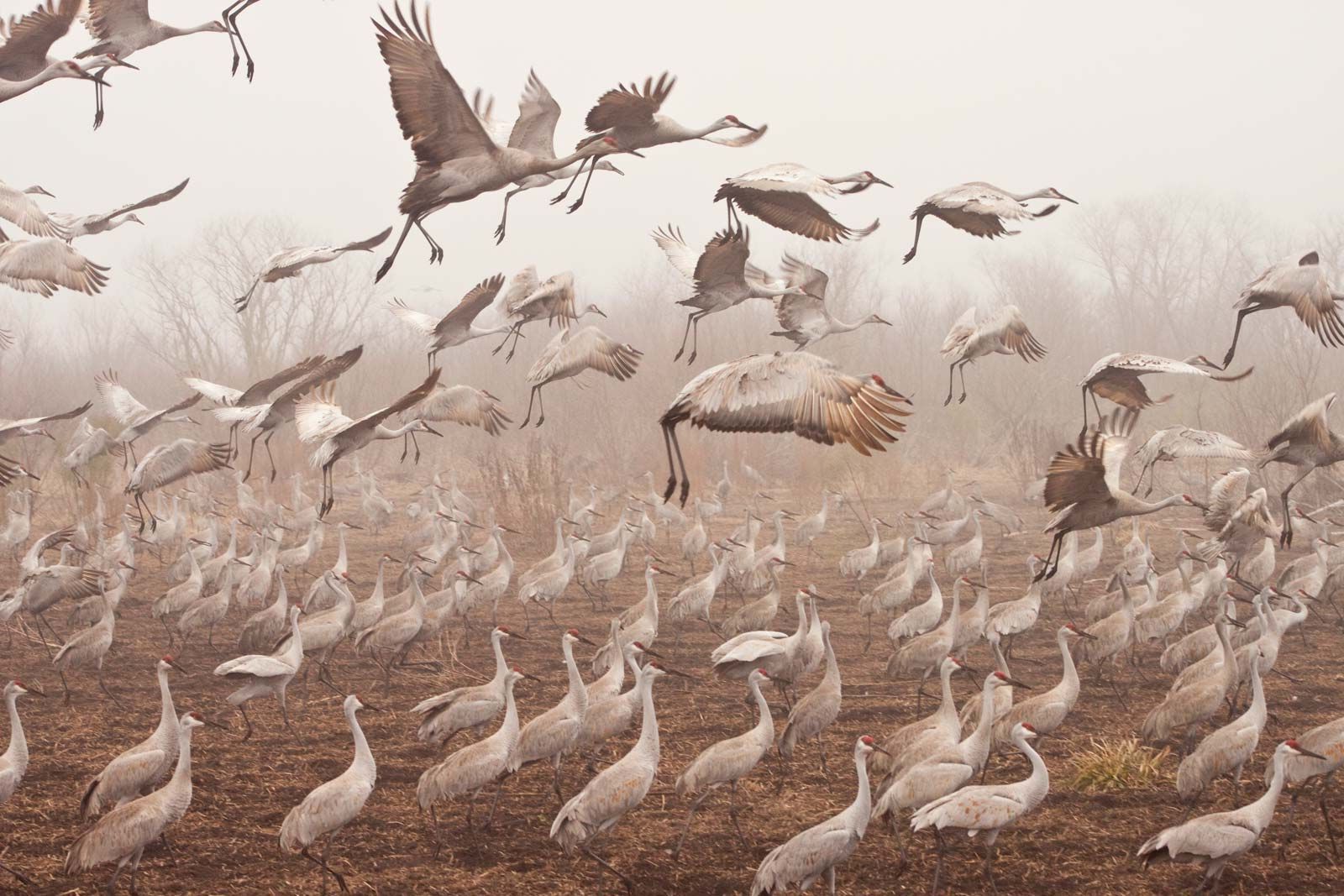
Animal migration is one of nature's most captivating spectacles. From tiny insects to massive mammals, many species undertake incredible journeys across the globe. Why do animals migrate? They move to find food, shelter, and mating opportunities, often in response to seasonal changes. These migrations can span thousands of miles and involve complex navigation methods. Understanding these patterns is crucial for conservation efforts, especially as human activities and climate change disrupt traditional routes. This article delves into 50 fascinating facts about animal migration, shedding light on the diverse strategies and challenges faced by migratory species. Join us as we explore the wonders of these epic journeys.
Key Takeaways:
- Animal migration is the incredible journey of animals moving long distances for food, shelter, or breeding. It's like a big adventure for them, and some travel thousands of kilometers!
- Human activities can disrupt animal migrations, but conservation efforts and supportive policies can help protect these amazing journeys. It's like giving animals a safe path to follow on their big adventure!
What is Animal Migration?
Animal migration is an incredible natural phenomenon where animals move from one place to another, often over long distances, in search of food, shelter, or breeding grounds. This behavior is observed in various species, from tiny insects to large mammals.
-
Definition of Animal Migration: Animal migration is the large-scale movement of an animal species from one place to another, typically in response to seasonal changes in weather and feeding patterns, or mating and breeding patterns.
-
Types of Migrations: There are several types of migrations, including complete migrations where all members of a species migrate, partial migrations where only some members migrate, and altitudinal migrations where animals move to lower altitudes during winter.
Examples of Long-Distance Migrations
Some animals undertake astonishingly long journeys, showcasing their endurance and navigational skills.
-
Arctic Tern: The Arctic tern migrates around 40,000 kilometers (25,000 miles) each year, making it one of the longest migrations in the animal kingdom.
-
Monarch Butterfly: Monarch butterflies travel over 8,000 kilometers (4,970 miles) each way from Canada to Mexico, a journey that spans multiple generations.
Why Do Animals Migrate?
Migration is often driven by the need to find food, suitable living conditions, or breeding grounds.
-
Seasonal Migration: Many animals migrate in response to seasonal changes in weather and feeding patterns. For instance, wildebeests migrate in search of greener pastures during the rainy season.
-
Intra-Species Variation in Migration: Even within a single species, there can be significant variation in migratory behavior. Some members of a species may migrate while others remain sedentary, a phenomenon known as partial migration.
Geographic and Temporal Patterns
Migration patterns can vary widely based on geographic location and timing.
-
Geographic Variation in Migration: Different populations of the same species may have different migratory patterns based on their geographic location. Birds that breed in the north may migrate long distances south to spend the winter, while those that breed at lower latitudes may be entirely sedentary.
-
Temporal Patterns of Migration: Temporal patterns of migration refer to the timing of migrations. Some migrations occur daily, while others are seasonal. For example, some birds migrate at night to avoid predators, while others migrate during the day to take advantage of favorable weather conditions.
Special Types of Migration
Some migrations are unique due to their specific patterns or the challenges they present.
-
Altitudinal Migration: Altitudinal migration involves moving to lower altitudes during winter. This is common in mountainous regions where snowfall can make higher altitudes uninhabitable. For example, some spotted owls migrate to lower altitudes during winter.
-
Partial Migration: Partial migration occurs when only some members of a species migrate, while others remain in their original location. This can happen when the range of the species is large enough that some individuals live in areas that are always relatively warm, while others live in temperate regions that get too cold in the winter.
Environmental and Human Impacts
Migration patterns can be significantly affected by environmental changes and human activities.
-
Environmental Factors Affecting Migration: Environmental factors such as climate change and habitat alteration can significantly affect migratory patterns. Changes in temperature and precipitation patterns can alter the timing and routes of migrations.
-
Human Impact on Migration: Human activities such as deforestation, urbanization, and pollution can disrupt migratory patterns. The destruction of habitats can force animals to change their migration routes or timing, leading to maladaptation and potential extinction.
Conservation Efforts
Protecting migratory species and their habitats is crucial for maintaining ecosystem health.
-
Conservation of Migrations: Conservation of migrations is crucial for maintaining ecosystem health. Effective conservation strategies must consider the spatial and temporal variation in migratory behavior, even within a single species or population.
-
Predictive Tools for Conservation: Predictive tools based on climatic or land-use models can help conservationists prioritize habitats or mitigation strategies. Understanding how migrations might respond to changing environments can allow conservationists to use predictive tools to identify the best conservation strategies.
Challenges and Technologies in Conservation
Conserving migratory species involves overcoming various challenges and utilizing advanced technologies.
-
Challenges in Conservation: Conservation of migrations is a complex task due to the dynamic nature of migratory behaviors. Documenting geographic variation among populations, evaluating intra-population variation, and investigating the impact of environmental changes is daunting but essential.
-
Emerging Technologies in Conservation: Emerging technologies such as satellite tracking and genetic analysis can provide valuable insights into migratory patterns and help develop targeted conservation strategies. Satellite tracking can reveal the exact routes and destinations of migratory species, while genetic analysis can identify the genetic basis of migratory traits.
Collaboration and Policy
Effective conservation requires collaboration among various stakeholders and supportive policies.
-
Collaboration in Conservation: Collaboration among scientists, policymakers, and managers is crucial for effective conservation of migrations. Interdisciplinary research projects involving ecologists, biologists, and conservationists can provide comprehensive insights into migratory behaviors and inform conservation policies.
-
Legal and Policy Implications: Legal and policy implications of migration conservation are significant. Laws and regulations can protect migratory species and their habitats, while policy mandates can guide management activities to minimize the impacts of human activities on migrations.
Management and Ecosystem Services
Management activities and ecosystem services play vital roles in supporting migratory species.
-
Management Activities: Management activities such as habitat restoration, predator control, and food supplementation can aid migratory species. Restoring habitats can provide necessary resources for migratory species, while controlling predators can reduce mortality rates during migrations.
-
Role of Ecosystem Services: Ecosystem services play a vital role in supporting migrations. Pollination and seed dispersal are essential for the reproduction of many plant species, which in turn provide food and shelter for migratory animals.
Economic and Cultural Significance
Animal migrations have significant economic and cultural impacts on human societies.
-
Impact on Human Economies: Animal migrations can have significant impacts on human economies. Migratory species can provide valuable resources such as fish and game, which are important for food security and recreation.
-
Cultural Significance: Animal migrations have cultural significance for many communities. The annual migration of caribou is an important event for indigenous communities in North America, providing a source of food and spiritual significance.
Scientific Research and Navigation
Scientific research has uncovered many mysteries about how animals navigate during migrations.
-
Scientific Research: Scientific research has shed light on some of the enduring mysteries about how species navigate during migrations. Studies have shown that some birds use celestial navigation to guide their migrations, while others use magnetic fields and chemical cues.
-
Navigation Mechanisms: Navigation mechanisms during migrations include celestial navigation, magnetic fields, and chemical cues. Some birds use the position of the sun and stars to navigate, while others use the Earth's magnetic field to determine their direction.
Endurance and Adaptation
Migratory journeys require significant endurance and often involve remarkable adaptations.
-
Endurance and Energy Expenditure: Migrations are energetically expensive journeys that require significant endurance. Some birds migrate thousands of kilometers each year, relying on stored fat reserves to sustain them during their journey.
-
Predator Avoidance: Predator avoidance is a critical aspect of migration. Many animals migrate at night to avoid predators, while others use camouflage and other strategies to evade detection.
Learning and Genetic Adaptation
Migration patterns can be influenced by social learning and genetic adaptations.
-
Social Learning: Social learning plays a role in migration patterns. Some species of birds learn their migratory routes from their parents, ensuring that the next generation follows the same paths.
-
Genetic Adaptation: Genetic adaptation is essential for survival during migrations. Some species of birds have genetic adaptations that allow them to fly at high altitudes and navigate through challenging weather conditions.
Habitat and Climate Change
The quality of habitats and climate change significantly affect migratory patterns.
-
Habitat Quality: Habitat quality affects migratory patterns. High-quality habitats provide necessary resources for migratory species, while degraded habitats can force animals to change their migration routes or timing.
-
Climate Change Impact: Climate change has a significant impact on migratory patterns. Changes in temperature and precipitation patterns can alter the timing and routes of migrations, leading to maladaptation and potential extinction.
Human Activities and Conservation Strategies
Human activities can disrupt migrations, but effective conservation strategies can mitigate these impacts.
-
Human Impact on Habitat: Human activities such as deforestation and urbanization can disrupt habitats, forcing animals to change their migration routes or timing. The destruction of forests can reduce the availability of food and shelter for migratory species.
-
Conservation Strategies: Conservation strategies include habitat restoration, predator control, and food supplementation. Restoring habitats can provide necessary resources for migratory species, while controlling predators can reduce mortality rates during migrations.
Economic and Cultural Benefits
Conservation efforts can yield significant economic and cultural benefits.
-
Economic Benefits: Economic benefits of conservation efforts include the protection of resources such as fish and game, which are important for food security and recreation. Protecting migratory species can support local economies through tourism and hunting.
-
Cultural Preservation: Cultural preservation is an important aspect of conservation efforts. Protecting migratory routes and habitats can preserve cultural traditions and practices associated with these events.
Scientific Collaboration and Policy Mandates
Collaboration and supportive policies are essential for effective conservation.
-
Scientific Collaboration: Scientific collaboration is crucial for understanding migratory patterns. Interdisciplinary research projects involving ecologists, biologists, and conservationists can provide comprehensive insights into migratory behaviors and inform conservation policies.
-
Policy Mandates: Policy mandates are essential for guiding management activities to minimize the impacts of human activities on migrations. Laws and regulations can protect migratory species and their habitats, ensuring their survival and well-being.
Management Activities and Ecosystem Services
Management activities and ecosystem services are vital for supporting migratory species.
-
Management Activities: Management activities such as habitat restoration, predator control, and food supplementation can aid migratory species. Restoring habitats can provide necessary resources for migratory species, while controlling predators can reduce mortality rates during migrations.
-
Ecosystem Services: Ecosystem services play a vital role in supporting migrations. Pollination and seed dispersal are essential for the reproduction of many plant species, which in turn provide food and shelter for migratory animals.
Human Impact and Conservation Efforts
Human activities can disrupt migrations, but conservation efforts can mitigate these impacts.
-
Human Impact on Migration: Human activities such as deforestation, urbanization, and pollution can disrupt migratory patterns. The destruction of habitats can force animals to change their migration routes or timing, leading to maladaptation and potential extinction.
-
Conservation Efforts: Conservation efforts include protecting migratory routes and habitats. Creating protected areas such as national parks and wildlife reserves can safeguard migratory species and their habitats.
Scientific Research and Navigation Mechanisms
Scientific research has uncovered many mysteries about how animals navigate during migrations.
-
Scientific Research: Scientific research has shed light on some of the enduring mysteries about how species navigate during migrations. Studies have shown that some birds use celestial navigation to guide their migrations, while others use magnetic fields and chemical cues.
-
Navigation Mechanisms: Navigation mechanisms during migrations include celestial navigation, magnetic fields, and chemical cues. Some birds use the position of the sun and stars to navigate, while others use the Earth's magnetic field to determine their direction.
Endurance, Predator Avoidance, and Social Learning
Migratory journeys require significant endurance and often involve remarkable adaptations.
-
Endurance and Energy Expenditure: Migrations are energetically expensive journeys that require significant endurance. Some birds migrate thousands of kilometers each year, relying on stored fat reserves to sustain them during their journey.
-
Predator Avoidance: Predator avoidance is a critical aspect of migration. Many animals migrate at night to avoid predators, while others use camouflage and other strategies to evade detection.
-
Social Learning: Social learning plays a role in migration patterns. Some species of birds learn their migratory routes from their parents, ensuring that the next generation follows the same paths.
Genetic Adaptation, Habitat Quality, and Climate Change
Migration patterns can be influenced by genetic adaptations, habitat quality, and climate change.
-
Genetic Adaptation: Genetic adaptation is essential for survival during migrations. Some species of birds have genetic adaptations that allow them to fly at high altitudes and navigate through challenging weather conditions.
-
Habitat Quality: Habitat quality affects migratory patterns. High-quality habitats provide necessary resources for migratory species, while degraded habitats can force animals to change their migration routes or timing.
-
Climate Change Impact: Climate change has a significant impact on migratory patterns. Changes in temperature and precipitation patterns can alter the timing and routes of migrations, leading to maladaptation and potential extinction.
Human Activities, Conservation Strategies, and Economic Benefits
Human activities can disrupt migrations, but effective conservation strategies can mitigate these impacts.
-
Human Impact on Habitat: Human activities such as deforestation and urbanization can disrupt habitats, forcing animals to change their migration routes or timing. The destruction of forests can reduce the availability of food and shelter for migratory species.
-
Conservation Strategies: Conservation strategies include habitat restoration, predator control, and food supplementation. Restoring habitats can provide necessary resources for migratory species, while controlling predators can reduce mortality rates during migrations.
The Marvel of Animal Migration
Animal migration is a mind-blowing natural phenomenon. From the Arctic tern's epic 40,000-kilometer journey to the monarch butterfly's 8,000-kilometer trek, these migrations are essential for survival. They help animals find food, shelter, and mating opportunities. Migration patterns vary widely, including complete, partial, and altitudinal migrations. Environmental factors, human activities, and climate change can disrupt these patterns, making conservation efforts crucial. Protecting migratory routes and habitats ensures the health of ecosystems and the survival of species. Emerging technologies like satellite tracking and genetic analysis offer valuable insights for conservation strategies. By understanding and preserving these incredible journeys, we can maintain the balance of nature for future generations. Animal migration isn't just about movement; it's about survival, adaptation, and the intricate dance of life on Earth.
Frequently Asked Questions
Was this page helpful?
Our commitment to delivering trustworthy and engaging content is at the heart of what we do. Each fact on our site is contributed by real users like you, bringing a wealth of diverse insights and information. To ensure the highest standards of accuracy and reliability, our dedicated editors meticulously review each submission. This process guarantees that the facts we share are not only fascinating but also credible. Trust in our commitment to quality and authenticity as you explore and learn with us.


